Art
Hamazkayin ArtLinks 2021 fosters discussions on art, culture and identity – Armenian Weekly

The 2021 Hamazkayin ArtLinks program brought together (virtually) dozens of participants from nine countries for conversations on art, culture and identity.
Held on July 31 and Aug. 1 via Zoom, the discussion sessions featured Oscar-winning screenwriter and producer Alexander Dinelaris, professors Dr. Lori Khatchadourian, Dr. Tamar Kabakian-Khasholian, Dr. Kim Hekimian and scholar Dr. Vazken Khatchig Davidian. Program director Dr. Khatchig Mouradian served as moderator.
The program kicked off with Dr. Mouradian’s welcoming remarks. Mouradian noted that ArtLinks, held in the format of a four-day retreat featuring workshops and discussions since 2015, has been held virtually over the past two years because of the pandemic, offering the possibility of remote participation. Participants hailed from Armenia, Brazil, Canada, England, France, Greece, Hungary, Russia and the United States. Mouradian expressed hope that the program will be able to convene in-person next year, possibly with a virtual component. The ArtLinks 2022 retreat is slated to be held in California.
‘Visualising the Hayasdantsi Bantoukhd’
 The first speaker of the day was Dr. Vazken Khatchig Davidian, who discussed “Visualising the Hayasdantsi Bantoukhd: The Constantinople Realists and the Representation of the Migrant Worker from Ottoman Armenia as Agent for Social Reform.”
The first speaker of the day was Dr. Vazken Khatchig Davidian, who discussed “Visualising the Hayasdantsi Bantoukhd: The Constantinople Realists and the Representation of the Migrant Worker from Ottoman Armenia as Agent for Social Reform.”
The figure of the Hayasdantsi bantoukhd (Հայաստանցի պանդուխտ, migrant worker from Armenia) was the main preoccupation of Constantinople Armenian intellectual elites throughout the second half of the nineteenth century. Most visible among these rural implants in the imperial capital were the thousands of men, mainly from the regions to the south and west of Lake Van, who worked as hamals (porters) on the streets of the imperial capital and dwelled in slum-like conditions in the city’s hans (inns). For these intellectuals, the conditions of the bantoukhd in the city and the dire economic and political situation in Ottoman Armenia (Տաճկահայաստան) were interconnected.
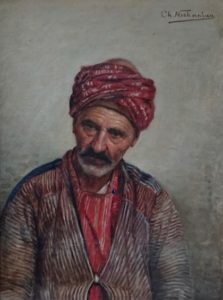
In his presentation, Dr. Davidian considered late nineteenth-century visual representations of these migrant laborers from the Ottoman East, by focusing in particular on a body of paintings of provincial Armenians executed by three of the most notable Ottoman Armenian artists of the late nineteenth century intellectually aligned with the Constantinople Realist movement (Պոլսահայ Իրապաշտ Սերունդ) during the 1880s and 1890s: Bedros Srabian (1833-1898), Simon Hagopian (1857-1921) and Garabed Charles Nichanian (1861-1950). By situating these works in their appropriate cultural, socio-economic and political historical setting in which they were conceived, executed, displayed and received, Davidian’s presentation contended that these remarkable academically trained artists had utilized an entire panoply of tools at their disposal in order to realize through these works a sympathetic image of the often-maligned bantoukhd with a view to influencing public opinion and promoting social reform to improve the lives of the Hayasdantsis.
Vazken Khatchig Davidian is Calouste Gulbenkian Post-Doctoral Fellow at the Oriental Institute, University of Oxford. He defended his doctoral thesis in art history – entitled “The Figure of the Bantoukhd Hamal of Constantinople: Late Nineteenth Century Representations of Migrant Workers from Ottoman Armenia” – at Birkbeck College, University of London in 2019. He is currently working on several projects, including two monographs.
A dynamic discussion followed with questions about the reasons behind the fact that many of these artists are virtually unknown to the Armenian community, and, unlike the work of Armenian realist writers, Armenian realist painters are generally not taught in diasporan schools.
COVID-19 in Armenia and beyond
 The second discussion of the day focused on the COVID-19 pandemic and its impact on Armenia, Artsakh and Armenian communities worldwide. Speakers Dr. Hekimian and Dr. Khasholian first presented an overview of and statistics on the pandemic globally and in a number of countries they used as case studies. They also discussed vaccine hesitancy, its challenges, causes and implications, outlining how public health professionals and governments have tried to tackle the issue.
The second discussion of the day focused on the COVID-19 pandemic and its impact on Armenia, Artsakh and Armenian communities worldwide. Speakers Dr. Hekimian and Dr. Khasholian first presented an overview of and statistics on the pandemic globally and in a number of countries they used as case studies. They also discussed vaccine hesitancy, its challenges, causes and implications, outlining how public health professionals and governments have tried to tackle the issue.
Kim Hekimian, PhD, is assistant professor of nutrition in pediatrics and the Institute of Human Nutrition (IHN) at Columbia University. She teaches public health nutrition, survey research, qualitative methods and research methods. She is also the Associate Director of Education for the Program for Global and Population Health at the Vagelos College of Physicians and Surgeons and was recently the associate director of the Medical Nutrition Program for Health Professionals at IHN.
Tamar Kabakian-Khasholian, MPH, PhD, is an associate professor at the Department of Health Promotion and Community Health, Faculty of Health Sciences, at the American University of Beirut in Lebanon. She holds a master’s degree in public health in epidemiology and biostatistics from the American University of Beirut and a PhD in maternal health from the London School of Hygiene and Tropical Medicine. Her research focuses on maternal and reproductive health.
A conversation with Alexander Dinelaris
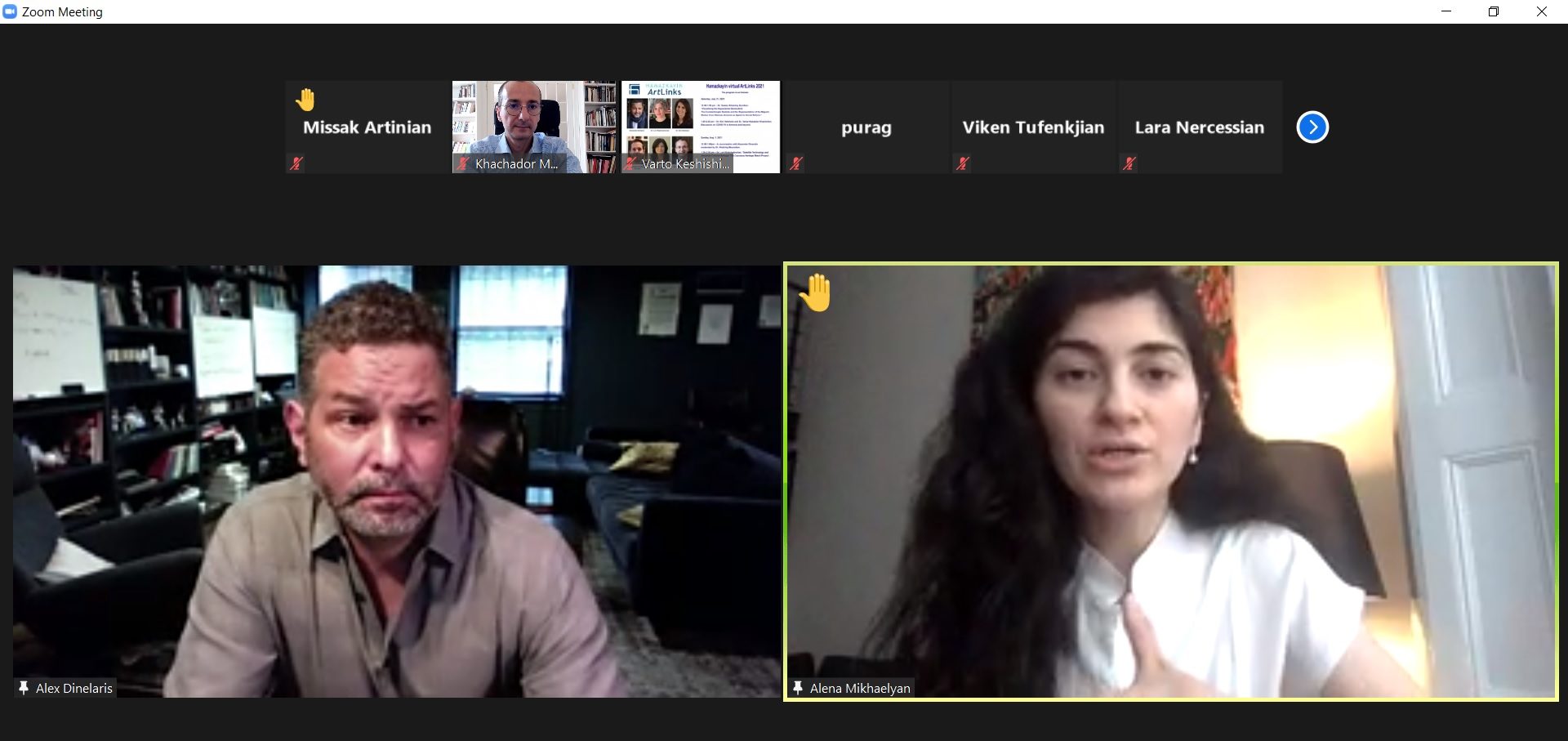 Day two of ArtLinks began with a discussion with Oscar-winning screenwriter Alex Dinelaris. In a dynamic conversation with participants that lasted an hour and a half, Dinelaris tackled his own trajectory in film and theatre, discussed several of his works, including Birdman, Still Life and Red Dog Howls, which tackles the Armenian Genocide. He engaged the participants in a conversation about theatre, self-doubt and honing one’s craft. He also reflected on the representation of the Armenian experience and the Genocide in Hollywood and beyond.
Day two of ArtLinks began with a discussion with Oscar-winning screenwriter Alex Dinelaris. In a dynamic conversation with participants that lasted an hour and a half, Dinelaris tackled his own trajectory in film and theatre, discussed several of his works, including Birdman, Still Life and Red Dog Howls, which tackles the Armenian Genocide. He engaged the participants in a conversation about theatre, self-doubt and honing one’s craft. He also reflected on the representation of the Armenian experience and the Genocide in Hollywood and beyond.
Dinelaris, a screenwriter and producer, won an Academy Award for Best Original Screenplay for the film Birdman in 2015. Dinelaris also wrote the book for the Broadway musical “On Your Feet” about the life and career of Gloria Estefan. For this, he was nominated for the Outer Critics Circle Award for Outstanding Book of a Musical. In 2019, he formed his New York-based production company Lexicon and announced that its first feature film will be an adaptation of the Broadway musical Jekyll & Hyde, which Dinelaris will adapt into a screenplay and produce. That same year, he wrote and directed the short film In This, Our Time.
Satellite Technology and Armenian Cultural Heritage
 Dr. Lori Khatchadourian spoke next, discussing “Satellite Technology and Armenian Cultural Heritage: The Caucasus Heritage Watch Project.” She presented the Caucasus Heritage Watch Project’s efforts to monitor heritage sites in the Caucasus, particularly in Artsakh and Azerbaijan. Dr. Khatchadourian discussed the initiative and its goals and explored the role of satellite technology in documenting damage or destruction of cultural heritage, as well as deterrence and accountability for such actions.
Dr. Lori Khatchadourian spoke next, discussing “Satellite Technology and Armenian Cultural Heritage: The Caucasus Heritage Watch Project.” She presented the Caucasus Heritage Watch Project’s efforts to monitor heritage sites in the Caucasus, particularly in Artsakh and Azerbaijan. Dr. Khatchadourian discussed the initiative and its goals and explored the role of satellite technology in documenting damage or destruction of cultural heritage, as well as deterrence and accountability for such actions.
During the ensuing discussion, Dr. Khatchadourian answered questions about the conditions of specific Armenian monasteries and cemeteries, addressed the potential for innovative techniques in the field of satellite technology and cultural heritage monitoring, and talked about the project’s preliminary findings.
Dr. Khatchadourian is associate professor of Near Eastern Studies at Cornell University. With a PhD in Classical Art and Archaeology from the University of Michigan (2008) and an MSc in Soviet and Post-Soviet Politics from the London School of Economics (1998), Khatchadourian’s research traverses the ancient and modern periods to grapple with the relationship between imperialism and materiality. The focus of her archaeological and anthropological research is the ancient and post-Soviet Caucasus, building on an earlier career in international political development in post-socialist Eurasia. She is author of Imperial Matter: Ancient Persia and the Archaeology of Empires (2016), co-editor of Fitful Histories and Unruly Publics: Rethinking Temporality and Community in Eurasian Archaeology (2017), and author of numerous articles on the archaeology of Armenia, the Caucasus, Anatolia and Persia. Khatchadourian’s current book project is a multidisciplinary study of the ruins of modernity in Armenia. She is also a co-founder of Caucasus Heritage Watch and interested in the use of earth observation technologies to monitor and document endangered and damaged cultural heritage.
Since its inaugural retreat in 2015, Hamazkayin ArtLinks has brought together some 150 artists and young professionals. Workshop leaders and speakers have included Liana Aghajanian, George Aghjayan, Vaneh Assadourian, Talin Avakian, Nanore Barsoumian, Vahe Berberian, Eric Bogosian, Chris Bohjalian, Dr. Talar Chahinian, Ara Dabanjian, Dr. Asya Darbinyan, Dr. Vazken Davidian, Alex Dinelaris, Dr. Lisa Gulesserian, Dr. Kim Hekimian, Mher Karakashian, Nayiri Karapetian, Lori Khatchadourian, Raffi Khatchadourian, Dr. Tamar Kabakian-Khasholian, Dr. Khatchig Mouradian, Taleen Mardirossian, Eric Nazarian, Aline Ohanesian, Dr. Kristi Rendahl, Vehanoush Tekian, Scout Tufankjian, Dr. Viken Tufenkjian, among others.
Reflections from ArtLinks 2021 Participants
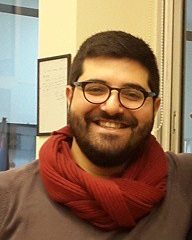
I’m so glad ArtLinks was online this year. It allowed me to join in as far as from Lebanon, which wasn’t possible previously when it was in person.
The selection of topics and speakers was great! We got to hear from a wide array of expertise on the most pressing topics of the day – Artsakh and COVID. We got front row seats to hear everything from using satellite technology to monitor heritage crime from Dr. Lori Khatchadourian, the founder of the initiative herself, to COVID’s rollercoaster impact on Armenia and the world.
And what is ArtLinks without some art? I was fascinated to learn about a different reality of Armenians – that of the kavars (Anatolian provinces) – in Istanbul, in their capacity as hamals, not as bankers or photographers or the things we usually learned about. All these through realist art and paintings of the time (re)discovered and analyzed by Dr. Vazken Davidian.
It’s not every day that we get to speak with an Academy Award winning screenplay writer. But we did! I had no idea Alex Dinelaris was Armenian. It makes me so happy and proud. We need more representation in Hollywood and Broadway.
Hrag Avedanian, Weekly contributor
Lebanon
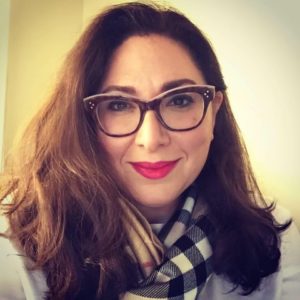
I use Artlinks to escape to a world that is different from my own. I am a prosecutor in one of the busiest counties in the country. I have now participated in two sessions of Artlinks to spend a weekend listening to experts in their fields of screenwriting, journalism, poetry, dance, etc. You would think my world has nothing to do with the beautiful world of the arts, but what I found listening to Alex Dinelaris speaking to the group—having a conversation with the group—was that the messages are universal. His advice was advice I could give to the young attorneys in my office, but also utilize myself. “Make the road as difficult for yourself as you humanly can, and learn from it” is advice anyone wishing to excel can use—advice that, if taken, will ensure growth, maturity and excellence, and hopefully success. He was then asked if he ever feels self-doubt, and his answer was simply “every single day.” I have been a practicing attorney for 16 years, and even though I know I have excelled, I feel the same every single time I step in the courtroom. It’s comforting to know I’m not alone, and the emotions we feel as we try to accomplish our goals in life are universal, regardless of what field we are in.
Lara Nercessian
United States
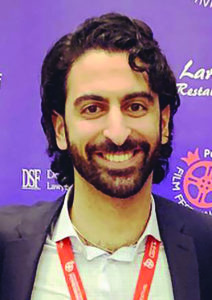
ArtLinks once again provided us with an exceptional environment for like-minded Armenian youth to come together. We are continuously presented with opportunities to explore our culture and history while joining new and old friends. There is always something for all participants, whether it feeds a professional hunger or a personal yearning – giving us that collective connection to our roots, the longing we so desire living away from the homeland.
Armen Poladian
Canada
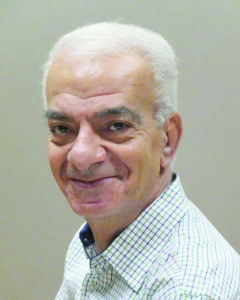
I have been involved with ArtLinks for the past seven years in various capacities, and every year I take away from it indelible memories, whether we meet in person or online. This year’s four online sessions were no exception. Participants engaged with the speakers enthusiastically, providing to us all insights into the wondrous aspects of Armenian culture and its significance in the current realities of both our homeland and the diaspora.
Dr. Viken Tufenkjian
Canada
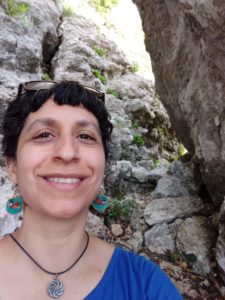
Perchance the organizers and participants of this year’s ArtLinks are channeling Varoujan’s drive. Moving and edifying realisms would abound throughout the weekend, with diverse presentations integral to the whole, and to my own ancestral reclamations through language and the arts. Dr. Vazken Khatchig Davidian’s illuminating talk on late Ottoman artists and writers as agents of social change opened up new realms to explore, while screenwriter Alex Dinelaris’ personal and often hilarious stories offered priceless insights for the journey. Even the comprehensive presentation on COVID-19 in Armenia and beyond by Dr. Tamar Kabakian-Khasholian and Dr. Kim Hekimian was weirdly relevant to my little world as I had just gotten my second vaccine shot in Yerevan and had seen first-hand several of the concerns they raised.
Building community and bearing witness is as vital today as I imagine it was to the Armenian creatives and intellectuals striving to address worsening hardships amongst our people prior to 1915, while facing mounting pressures from the Ottoman state to be silent. Though many of our bright lights were ultimately and brutally extinguished 106 years ago, it is clear their fire lives on worldwide.
This year’s ArtLinks unfolded like a fever dream, and not just because of the vaccine’s side effects that weekend. The final presentation by Dr. Lori Khatchadourian covered past and ongoing destruction of cultural heritage in the Caucasus, and cutting-edge initiatives to document and monitor remaining sites at risk. There was also a generous opportunity to discuss the impact of engaging in such work in the wake of the 2020 Artsakh War, aiding my struggles with an arts project responding to the systematic erasure of Armenian cultures and communities. On the road to healing and justice, the thoughtful curation and conversations of ArtLinks 2021 are reigniting the call to see «կեանքը ինչպէս որ է» (“life as it is”)—as the Constantinople Realists would say—through Varoujan’s eyes and our own.
Elise Youssoufian, Weekly columnist
Armenia
Art
Ukrainian sells art in Essex while stuck in a warzone – BBC.com
[unable to retrieve full-text content]
Ukrainian sells art in Essex while stuck in a warzone BBC.com

Source link
Art
Somerset House Fire: Courtauld Gallery Reopens, Rest of Landmark Closed
The Courtauld Gallery at Somerset House has reopened its doors to the public after a fire swept through the historic building in central London. While the gallery has resumed operations, the rest of the iconic site remains closed “until further notice.”
On Saturday, approximately 125 firefighters were called to the scene to battle the blaze, which sent smoke billowing across the city. Fortunately, the fire occurred in a part of the building not housing valuable artworks, and no injuries were reported. Authorities are still investigating the cause of the fire.
Despite the disruption, art lovers queued outside the gallery before it reopened at 10:00 BST on Sunday. One visitor expressed his relief, saying, “I was sad to see the fire, but I’m relieved the art is safe.”
The Clark family, visiting London from Washington state, USA, had a unique perspective on the incident. While sightseeing on the London Eye, they watched as firefighters tackled the flames. Paul Clark, accompanied by his wife Jiorgia and their four children, shared their concern for the safety of the artwork inside Somerset House. “It was sad to see,” Mr. Clark told the BBC. As a fan of Vincent Van Gogh, he was particularly relieved to learn that the painter’s famous Self-Portrait with Bandaged Ear had not been affected by the fire.
Blaze in the West Wing
The fire broke out around midday on Saturday in the west wing of Somerset House, a section of the building primarily used for offices and storage. Jonathan Reekie, director of Somerset House Trust, assured the public that “no valuable artefacts or artworks” were located in that part of the building. By Sunday, fire engines were still stationed outside as investigations into the fire’s origin continued.
About Somerset House
Located on the Strand in central London, Somerset House is a prominent arts venue with a rich history dating back to the Georgian era. Built on the site of a former Tudor palace, the complex is known for its iconic courtyard and is home to the Courtauld Gallery. The gallery houses a prestigious collection from the Samuel Courtauld Trust, showcasing masterpieces from the Middle Ages to the 20th century. Among the notable works are pieces by impressionist legends such as Edouard Manet, Claude Monet, Paul Cézanne, and Vincent Van Gogh.
Somerset House regularly hosts cultural exhibitions and public events, including its popular winter ice skating sessions in the courtyard. However, for now, the venue remains partially closed as authorities ensure the safety of the site following the fire.
Art lovers and the Somerset House community can take solace in knowing that the invaluable collection remains unharmed, and the Courtauld Gallery continues to welcome visitors, offering a reprieve amid the disruption.
Art
Sudbury art, music festival celebrating milestone

Sudbury’s annual art and music festival is marking a significant milestone this year, celebrating its long-standing impact on the local cultural scene. The festival, which has grown from a small community event to a major celebration of creativity, brings together artists, musicians, and visitors from across the region for a weekend of vibrant performances and exhibitions.
The event features a diverse range of activities, from live music performances to art installations, workshops, and interactive exhibits that highlight both emerging and established talent. This year’s milestone celebration will also honor the festival’s history by showcasing some of the artists and performers who have contributed to its success over the years.
Organizers are excited to see how the festival has evolved, becoming a cornerstone of Sudbury’s cultural landscape. “This festival is a celebration of creativity, community, and the incredible talent we have here in Sudbury,” said one of the event’s coordinators. “It’s amazing to see how it has grown and the impact it continues to have on the arts community.”
With this year’s milestone celebration, the festival promises to be bigger and better than ever, with a full lineup of exciting events, workshops, and performances that will inspire and engage attendees of all ages.
The festival’s milestone is not just a reflection of its past success but a celebration of the continued vibrancy of Sudbury’s arts scene.

-

 News6 hours ago
News6 hours agoB.C. to scrap consumer carbon tax if federal government drops legal requirement: Eby
-

 Sports8 hours ago
Sports8 hours agoLawyer says Chinese doping case handled ‘reasonably’ but calls WADA’s lack of action “curious”
-

 Sports2 hours ago
Sports2 hours agoCanada’s Marina Stakusic advances to quarterfinals at Guadalajara Open
-

 News6 hours ago
News6 hours agoA linebacker at West Virginia State is fatally shot on the eve of a game against his old school
-

 News6 hours ago
News6 hours agoHall of Famer Joe Schmidt, who helped Detroit Lions win 2 NFL titles, dies at 92
-

 News17 hours ago
News17 hours agoReggie Bush was at his LA-area home when 3 male suspects attempted to break in
-

 News8 hours ago
News8 hours agoRCMP say 3 dead, suspects at large in targeted attack at home in Lloydminster, Sask.
-

 News8 hours ago
News8 hours agoBad weather and boat modifications led to capsizing off Haida Gwaii, TSB says




















